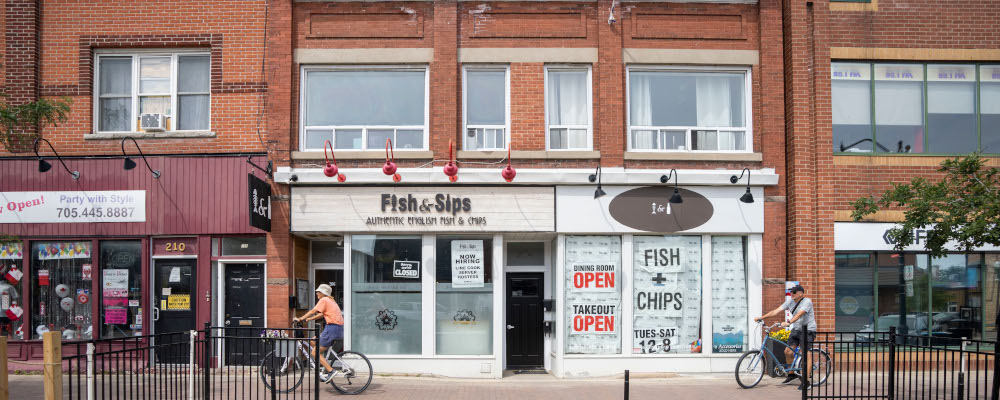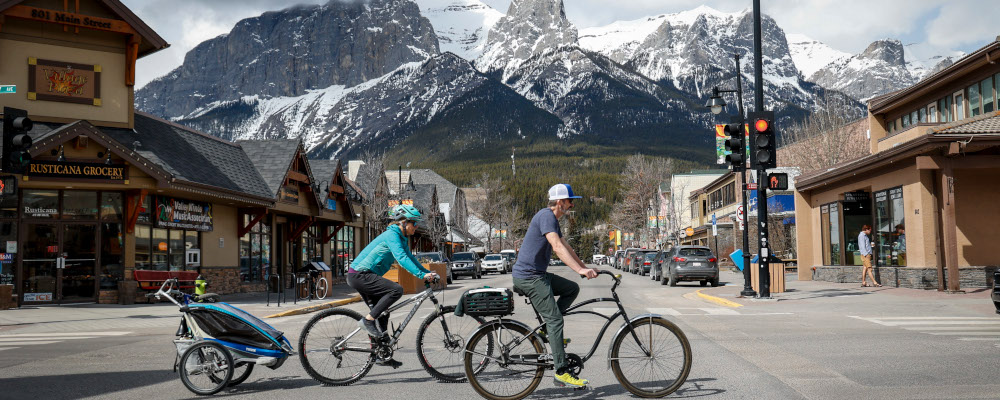I try to ignore conspiracy theories. They’re a dime a dozen nowadays. But there’s one that drives me crazy that just won’t go away: 15-minute cities.
In our current buzzword-driven media environment, any term that gets traction tends to polarize people. Even the most banal ideas, like 15-minute cities.
The idea behind 15-minute cities is pretty simple: we should build communities where people can fulfill most of their needs within a 15-minute walk. Some terminally online conservatives seem to believe that this would be a radical feat of social engineering that would end our traditional (mostly) free-market way of living. It’s an extreme version of the general sense some conservatives have that encouraging density and walkability (or bikeability) is at odds with freedom.

Of course, 15-minute cities already exist all over Canada. Most neighbourhoods built before the 1950s would qualify as 15-minute cities. You might even say that Canada was built on 15-minute cities!
Take the East Side of Toronto, stretching from the Don Valley to Scarborough. It’s composed of classic streetcar suburbs filled with older, mid-density homes. There aren’t many tall apartments, but there are plenty of small post-war detached houses, row houses, townhouses, and small apartments—the kind of “missing middle” housing that urban planners love. Because there’s a reasonable amount of density, there are plenty of amenities.
Let’s zoom in to my neighbourhood, Leslieville. I can walk to three full-service grocery stores in under 15 minutes. Within that radius I’ve also got a Canadian Tire; two Shopper’s Drug Marts; three LCBOs; four breweries; two butchers and a fish monger; medical professionals; etc. I could go weeks without leaving my neighbourhood if I had to. I don’t have to hop in a car, fight traffic, and find parking to get a cup of sugar. If this 15-minute city is a prison, I’ll happily take a life sentence.
I’m not just trolling here. This is important to me because I’m a market urbanist. I want more freedom to live the lifestyle of my choosing without top-down planning getting in the way. I want to maximize people’s choices and ensure that we have livable, affordable communities. But I find myself arguing with conservatives who claim to want the very same thing! Often, at least in part, because they buy into the idea that anything other than car-oriented development is central planning.
The 15-minute cities conspiracy hints at a deeper flaw in a certain type of conservative thinking. Suburban conservative politicians often dress up their own flavour of urban planning in the language of freedom. They’ll argue that low-cost subsidized bike lanes are tyranny, but then have no problem with high-cost subsidized highways or stadiums. It’s hard to have a serious conversation about public policy when certain decisions are coded as freedom and others as socialism when in reality they’re all just banal planning decisions involving annoying tradeoffs.
It’s easy to understand how people who don’t spend their time thinking about land-use policy might assume that one-size-fits-all urban sprawl is the free market outcome since it’s most of what we’ve built in North America over the last half-century.
In reality, car-dependent suburbs are some of the most rigidly planned communities on earth. They tend to be mostly (or entirely) zoned for only one detached unit per lot (often with minimum lot sizes) along with the legally mandated amount of parking, following prescribed building codes. You can’t even open a coffee shop in most of them. It’s hard to imagine a community with no commercial amenities emerging organically. I’m pretty sure most people would like to be able to walk to the corner to get some milk (or mylk, I guess).
The reality is that all communities are planned to an extent. That’s not a conspiracy—just a statement of fact. Homesteaders of yore didn’t just stumble into communities lined with roads and utility poles. This isn’t Sim City!

Building and managing cities requires collective action. All collective action entails “social engineering.” Traffic laws are social engineering, but no one would argue that stop signs are tyranny. Planning should be minimally coercive and maximize choice. But there’s no getting around planning!
Sometimes municipal governments do things that sound vaguely communist like building free roads and parks. But that’s the nature of city life. Unless we’re going to create some sort of anarcho-capitalist society that doesn’t exist outside of libertarian science fiction, we’re going to have to accept that municipal government makes decisions that involve tradeoffs between the interests of various groups.
Recognizing the legitimacy of these tradeoffs helps us get to productive conversations. For instance, what is the right balance between accommodating drivers and protecting pedestrians? What restrictions ought to exist on businesses operating in residential areas? On what basis should cities be allowed to block development? Should it be illegal to open a coffee shop?
There are no easy answers to these questions. But if we want to improve municipal governments, they’re questions we should think about rather than getting sucked down the rabbit hole. It’s dark down there, and there aren’t many answers.




